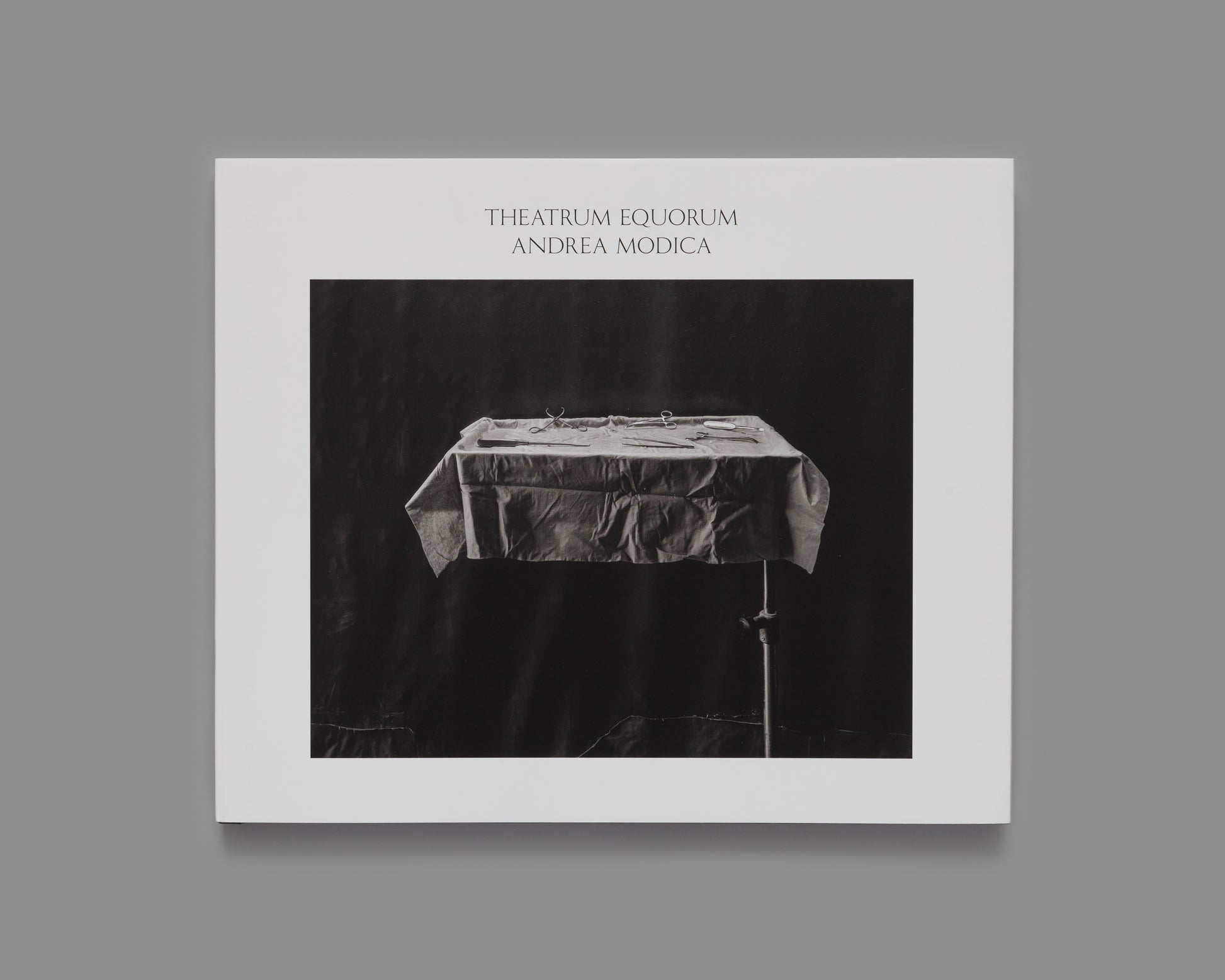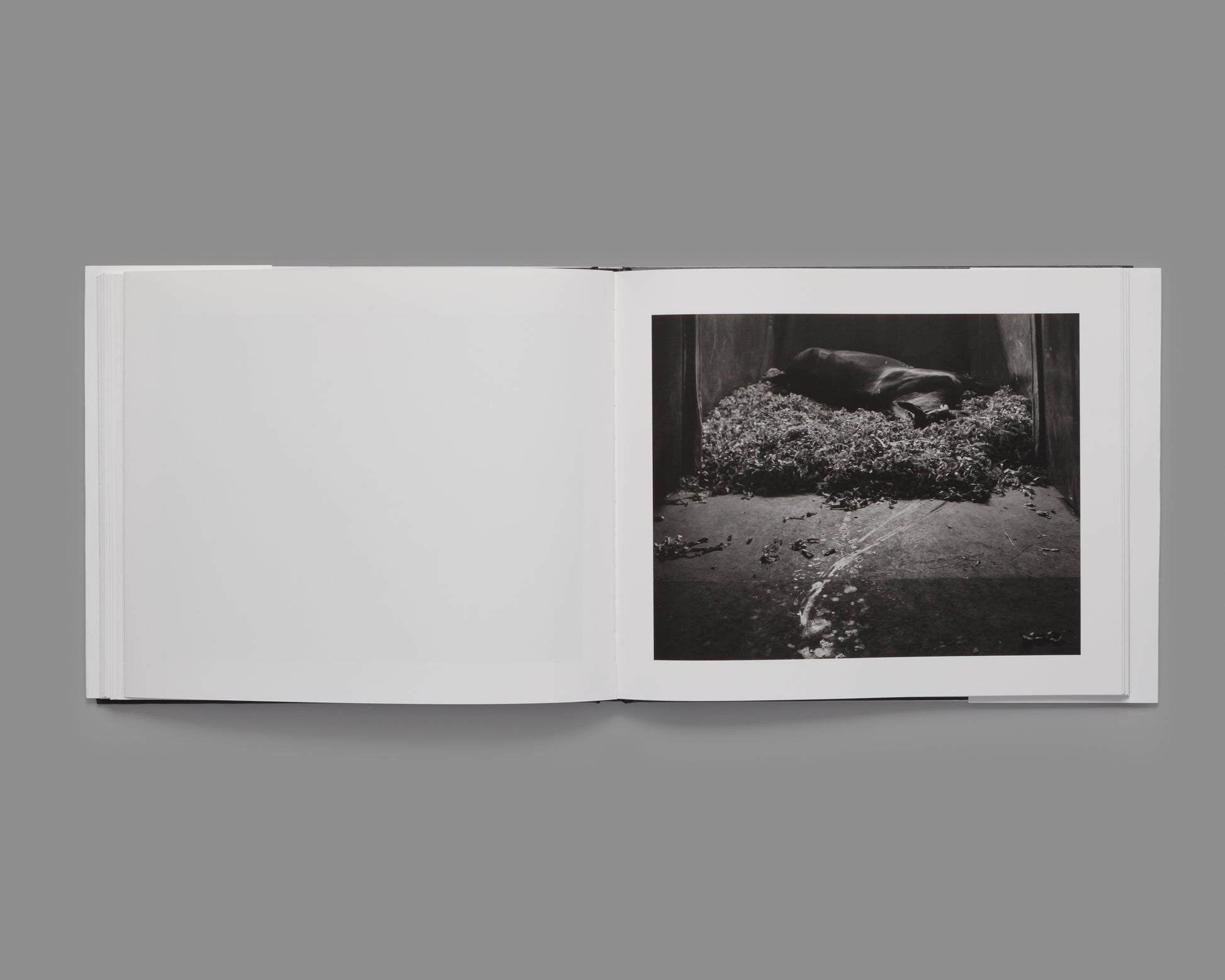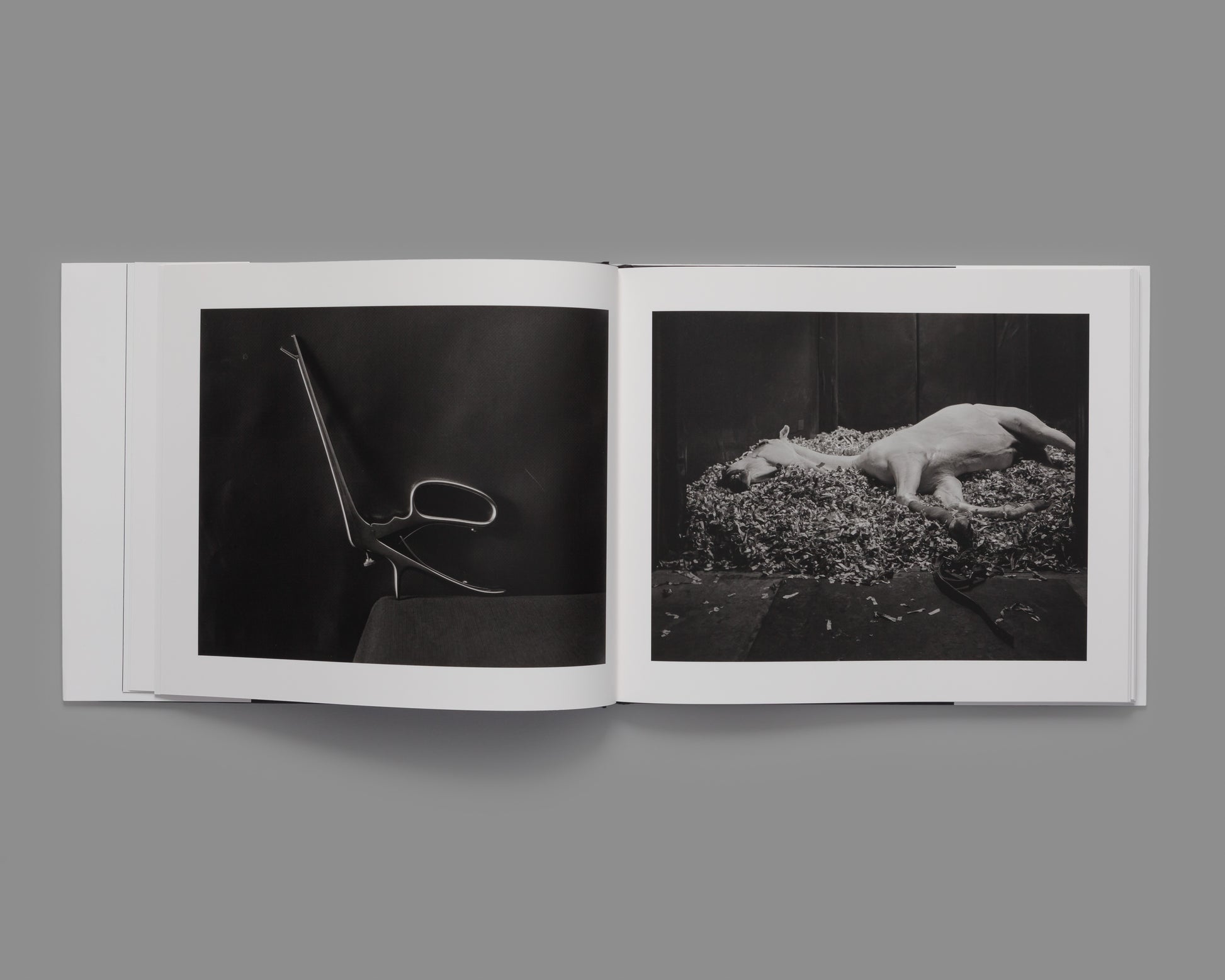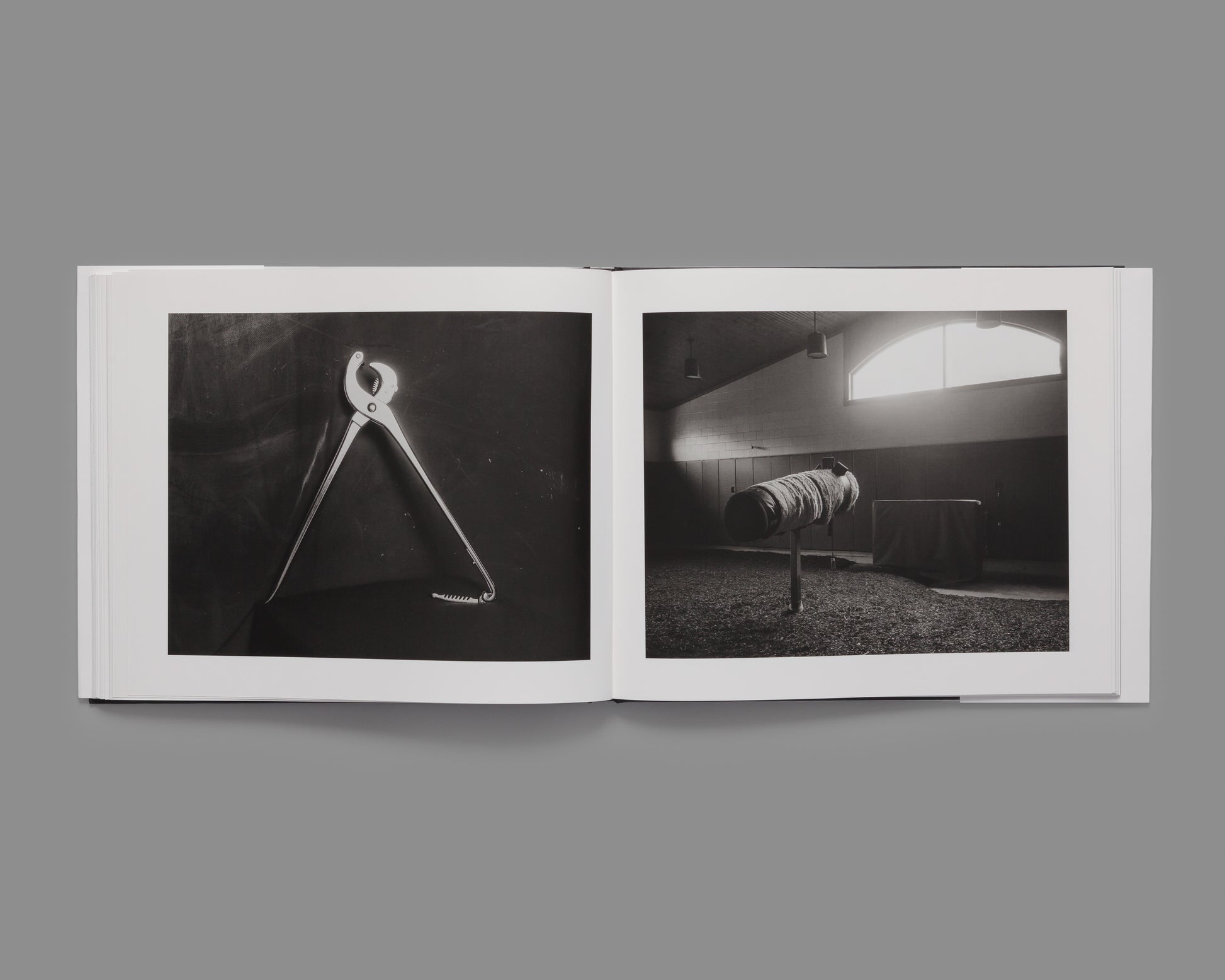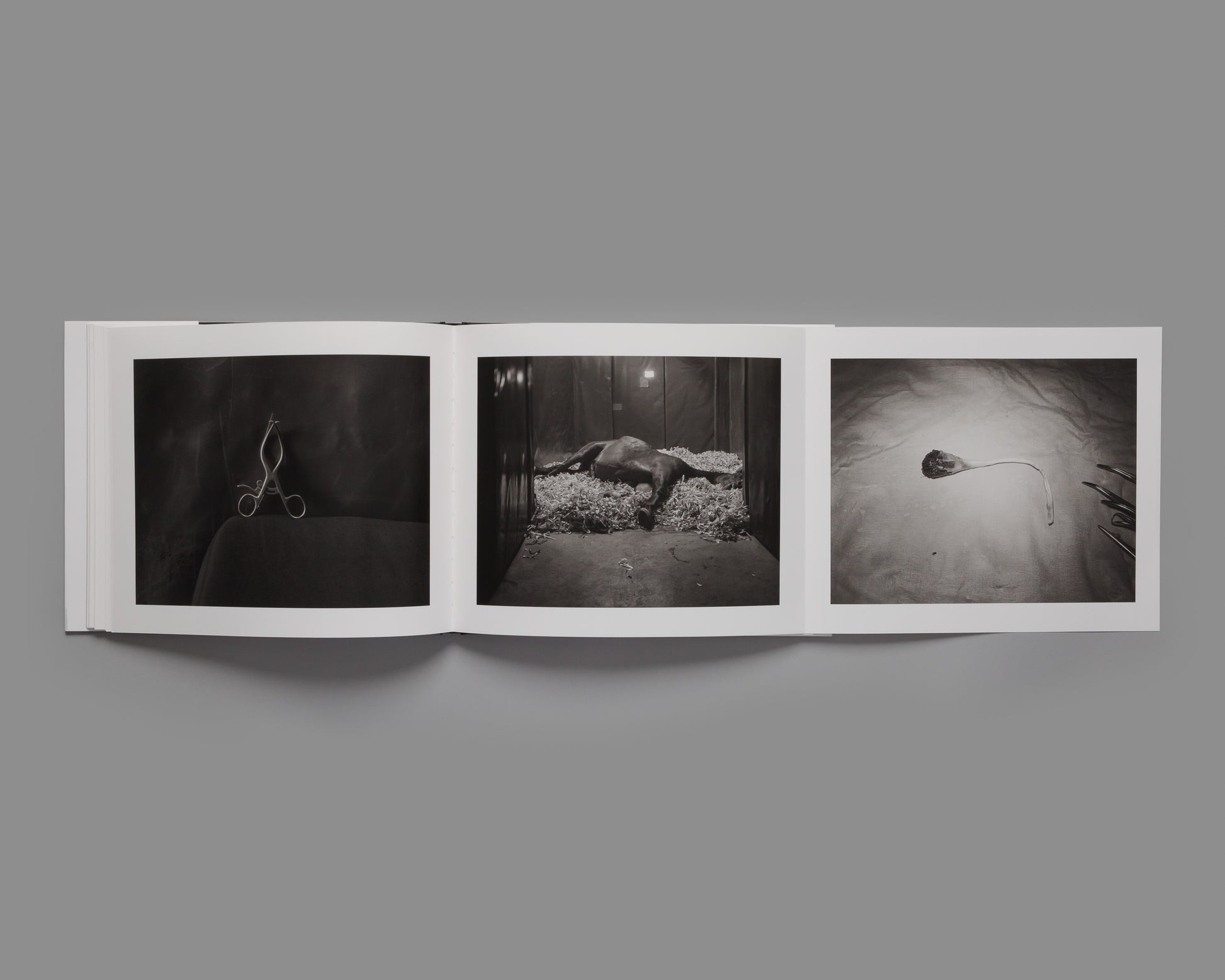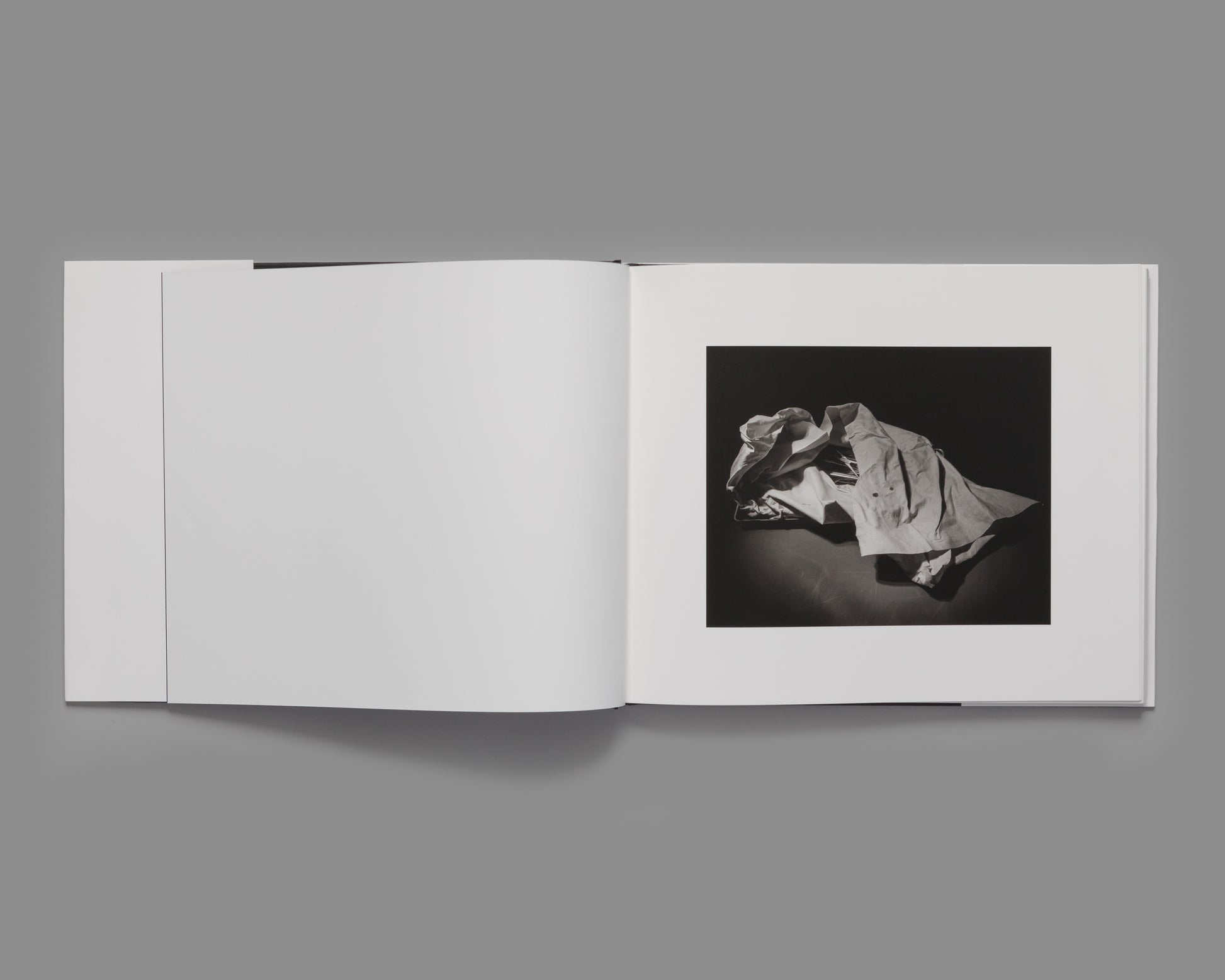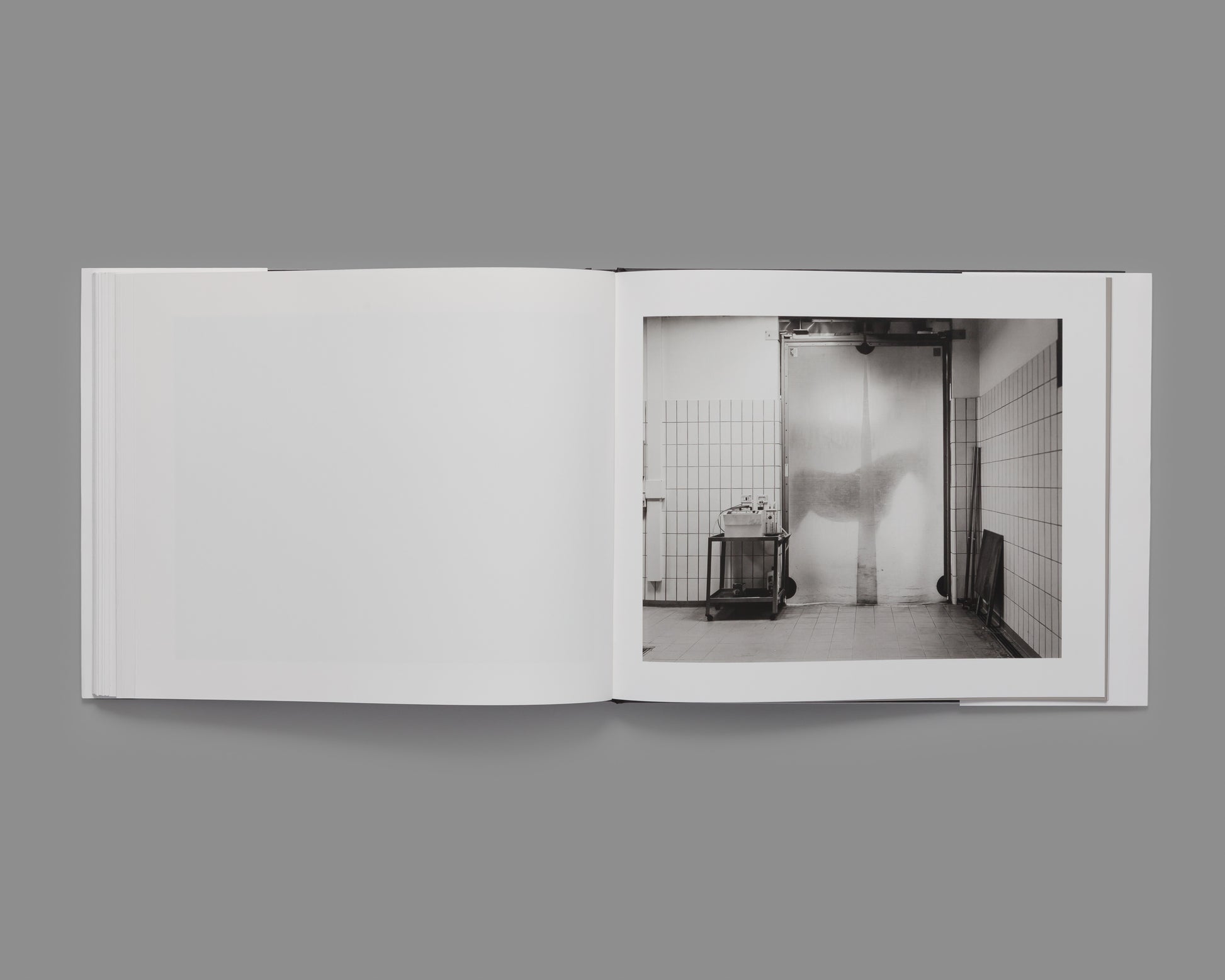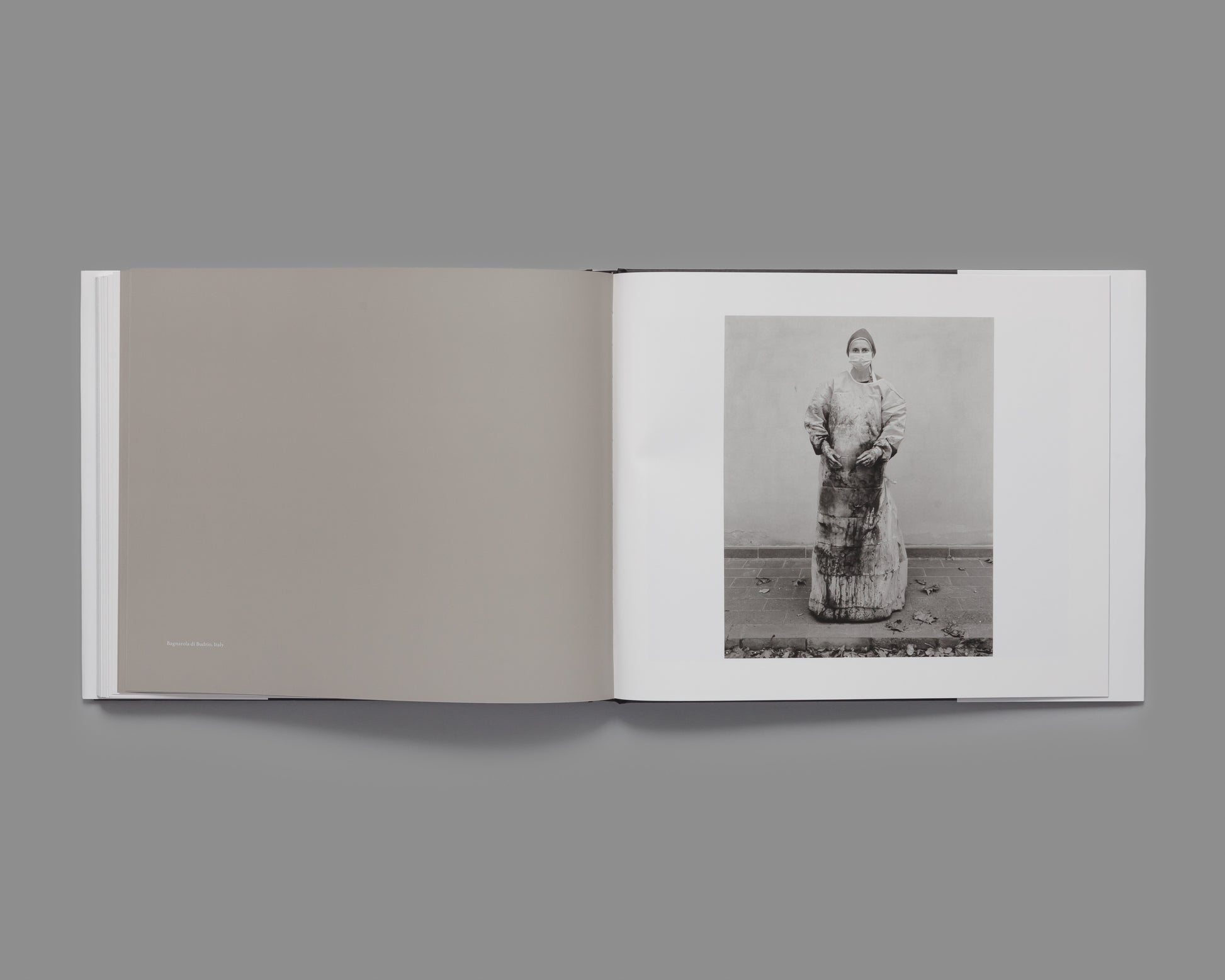Many curious feelings arise from the photographs in Andrea Modica’s new book, Theatrum Equorum. They emerge slowly, and sometimes surprisingly, between intentionally repetitive images of horses lying in repose, resting on beds of shredded paper, enclosed by dark, and featureless walls. It isn’t a context where we are accustomed to seeing horses. They are supposed to be outdoors, in a field, trotting off into the sunset. Still lifes made up of crude-looking surgical tools, presumably used to operate on these majestical creatures are interspersed, sometimes arranged carefully, other times in scattered, bloody piles.
Flipping through the pages of Modica’s book is like flipping between two singular images—or are there eighty? We never travel far, returning over and over again to a similar place but with a new sensation. It’s this contradiction that is so curious. A scene that several pages ago looked peaceful suddenly transforms into something uncomfortably tragic. Tools laid out to repair wounds and save lives also seem terrifying and cruel. The lives of horses are so intimately tied to human history. They’ve carried us and our belongings across continents, plowed our fields, died in our battles, and grown wings in our myths. In the hospital, these horses lay recovering from surgeries, some life-saving. Do the horses know what is happening to them, do they understand pain and healing? How did they end up here and what life are they returning to? A single image at the end of the book is the only instance we encounter a human. A masked surgeon stands against a wall with gloved hands held carefully above a waist soaked in blood. Curious feelings indeed… —Alex Nicholson
TIS books, tisbooks.pub

